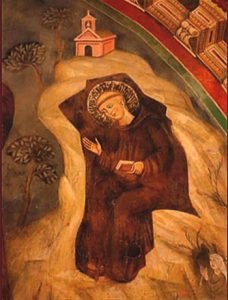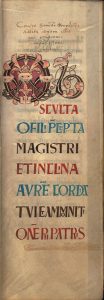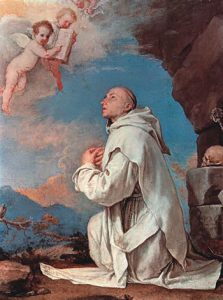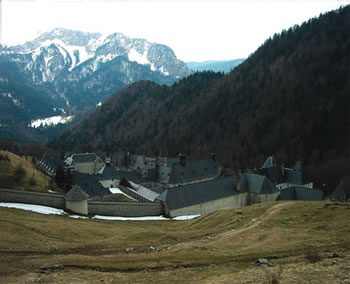A School for Prayer (16) – Lectio Divina Subiaco
St Benedict Chartreuse
Guigo the Carthusian
By Fr Craig Larkin sm, 1943 - 2015

St Benedict
St Benedict was born in Nursia, Italy, around the year 480, the son of a noble family.
He went to Rome to study; was repelled by the moral and political decay he saw there; gave up his studies, and went to Subiaco where he lived in a cave in isolation for three years.
His way of life attracted people who joined him.
In the Subiaco region he established 12 monasteries.
In 529 he founded a monastery in Monte Cassino. From there he wrote his Rule and led the community as Abbot until his death in 547.
The Rule he wrote has been a template for monastic rules ever since. It is moderate but exigent. His monasteries were considered to be “schools” for holiness.
Benedict puts particular emphasis on reading for the spiritual life of the monk, and requires him to spend about three hours each day in reading.
Although this follows the tradition of the East, nevertheless Benedict’s emphasis is particular.
Careful, methodical and slow reading of Scriptures and the sacred texts, both in private and in community, has been a characteristic of the monastic life of the West.
During the Lenten Season, let them be employed in reading from morning until the third hour.
Above all, let one or two of the seniors be appointed to go about the monastery during the time that the brothers devote to reading, and take notice in case they are not attending to their reading. Rule, No. 48
Benedict offers three kinds of reading for his monks:

Opening of the Prologue from the Rule of St Benedict, Canterbury, England, c. 1000
• Scripture
• The Fathers
• The two books of John Cassian
In the Rule, we find the first indications of what we know as Lectio Divina.
Lectio divina is not “spiritual reading” as it is commonly understood.
It is more than the pious reading of “spiritual books”.
It is not the academic study of Scripture or historical texts, nor is it reading undertaken professionally or for entertainment or for knowledge. It is not a way of reading in order to obtain information; it is not a way of preparing homilies, or of reading Scripture academically.
Lectio divina is the slow, careful, pondering on the Word of God, digesting the words, examining their meaning, committing them to memory, recalling them, allowing them to touch the individual’s desire for God and to lead the person to dialogue with God.
To appreciate the full flowering of Benedict’s teaching on Lectio divina, we jump to the 12th century, to a little book written by a Carthusian monk.
THE CARTHUSIANS
ST BRUNO THE FOUNDER

St Bruno
St Bruno is recognised as the founder of one of the strictest and most demanding monastic Orders in the Church.
Born in 1030, Bruno began a career in the Church, but at the age of 50, he and six fellow monks went looking for a place where they could live in the strictest solitude and in the most difficult of conditions.
They chose the forest of Chartreuse, in the southern part of France, between Lyons and Grenoble. The place is practically enclosed by mountains on all sides. The ground was nothing but masses of broken rock, overgrown vegetation and trees with roots rising out of the earth. The climate was severe, with heavy winter snows. The place was practically inaccessible.
Solitude, silence and poverty were the only things that anyone would experience in La Grande Chartreuse.
From this beginning, the Carthusian Order began. The Carthusian Order is the only Order in the Church that claims it has never been reformed, and has never needed reform.

“One cannot conceive how it could enter into the mind of a man to establish a community in a spot so horrible and so barren as this.”
A visitor to Chartreuse in 1760
 Entries(RSS)
Entries(RSS)